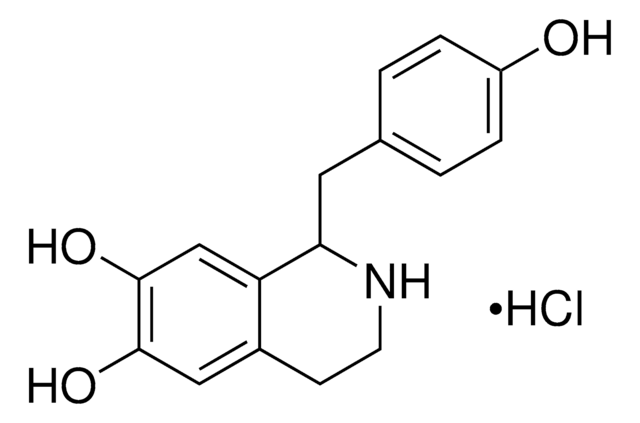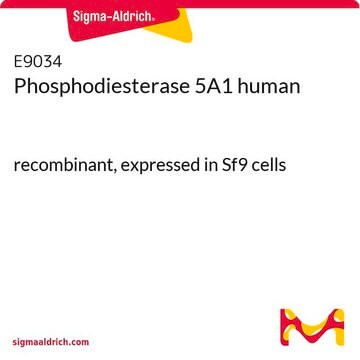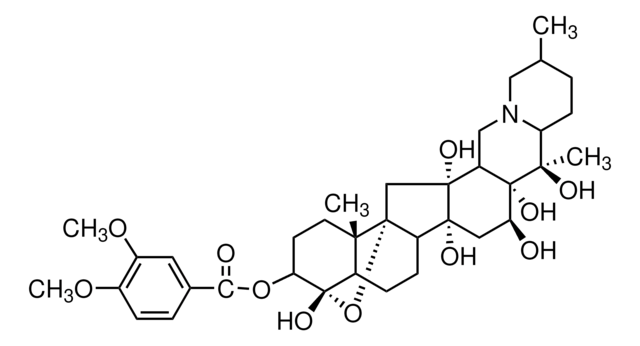SML0398
Salsolinol hydrobromide
≥96% (HPLC)
同義詞:
(R,S)-Salsolinol hydrobromide, 1,2,3,4-Tetrahydro-1-methylisoquinoline-6,7-diol hydrobromide, 1-Methyl-1,2,3,4-tetrahydroisoquinoline-6,7-diol hydrobromide, 1-Methyl-6,7-dihydroxy-1,2,3,4-tetrahydroisoquinoline 1,2,3,4-Tetrahydro-1-methylisoquinoline-6,7-diol hydrobromide; 1-Methyl-1,2,3,4-tetrahydroisoquinoline-6,7-diol hydrobromide;
About This Item
推薦產品
化驗
≥96% (HPLC)
形狀
powder
儲存條件
desiccated
顏色
white to brown
溶解度
H2O: 5 mg/mL (warmed; clear solution)
儲存溫度
2-8°C
SMILES 字串
Br.CC1NCCc2cc(O)c(O)cc12
InChI
1S/C10H13NO2.BrH/c1-6-8-5-10(13)9(12)4-7(8)2-3-11-6;/h4-6,11-13H,2-3H2,1H3;1H
InChI 密鑰
OGMGXKJQIOUTTB-UHFFFAOYSA-N
一般說明
生化/生理作用
特點和優勢
訊號詞
Warning
危險聲明
危險分類
Eye Irrit. 2 - Skin Irrit. 2 - STOT SE 3
標靶器官
Respiratory system
儲存類別代碼
11 - Combustible Solids
水污染物質分類(WGK)
WGK 3
閃點(°F)
Not applicable
閃點(°C)
Not applicable
分析證明 (COA)
輸入產品批次/批號來搜索 分析證明 (COA)。在產品’s標籤上找到批次和批號,寫有 ‘Lot’或‘Batch’.。
我們的科學家團隊在所有研究領域都有豐富的經驗,包括生命科學、材料科學、化學合成、色譜、分析等.
聯絡技術服務









